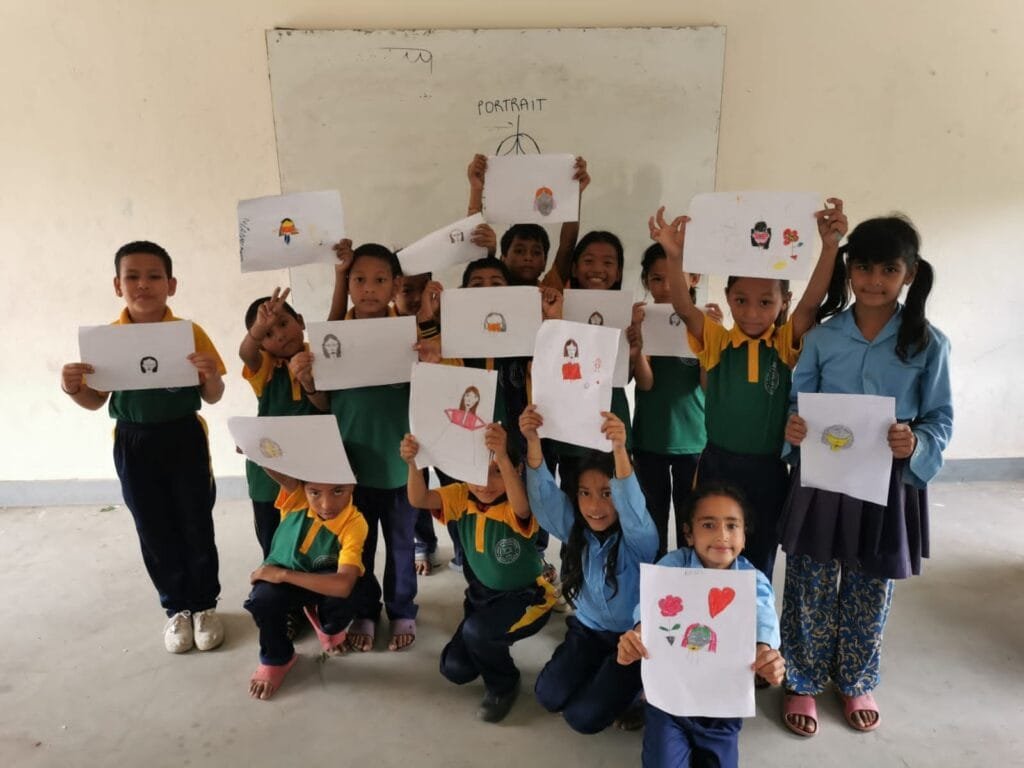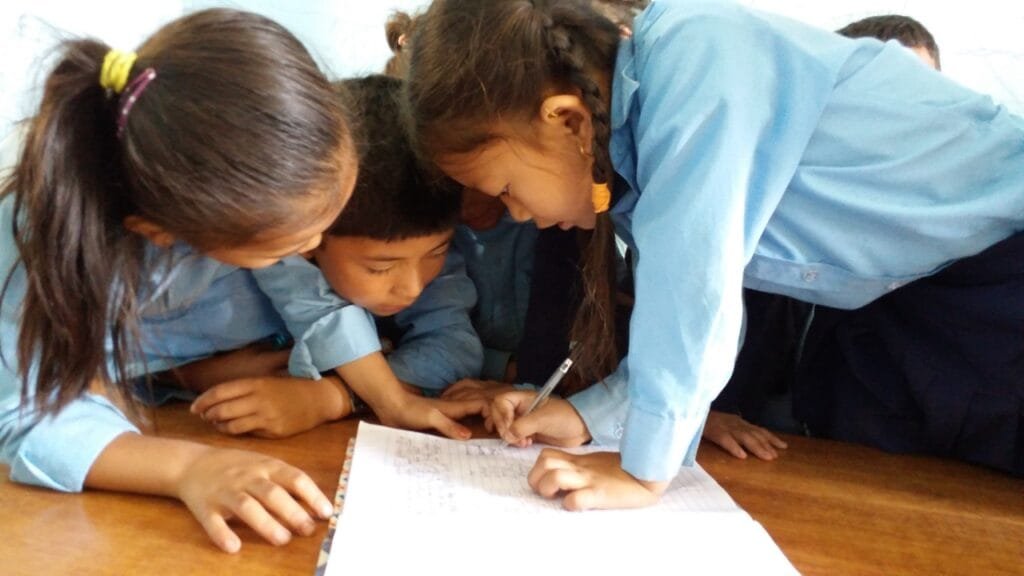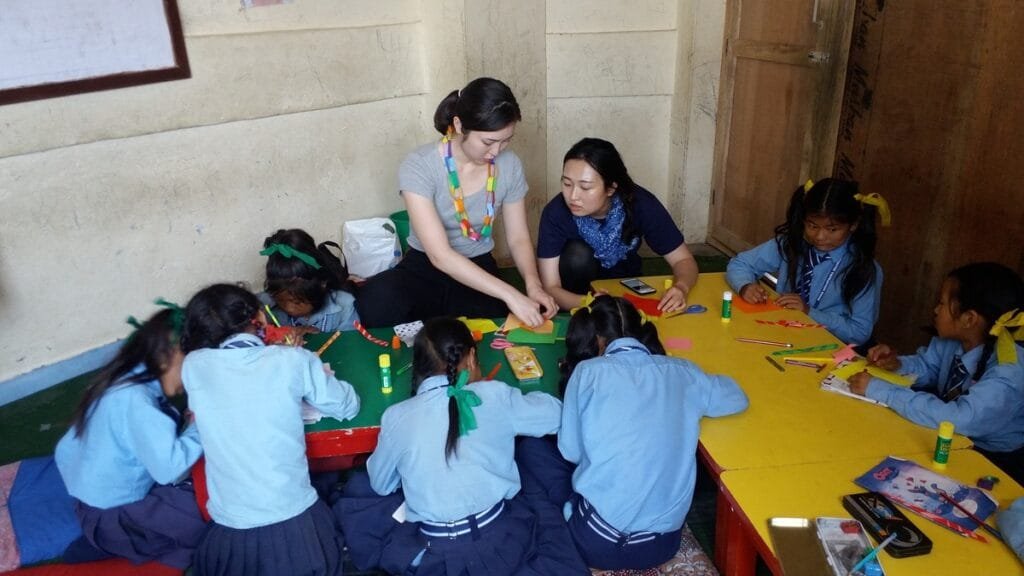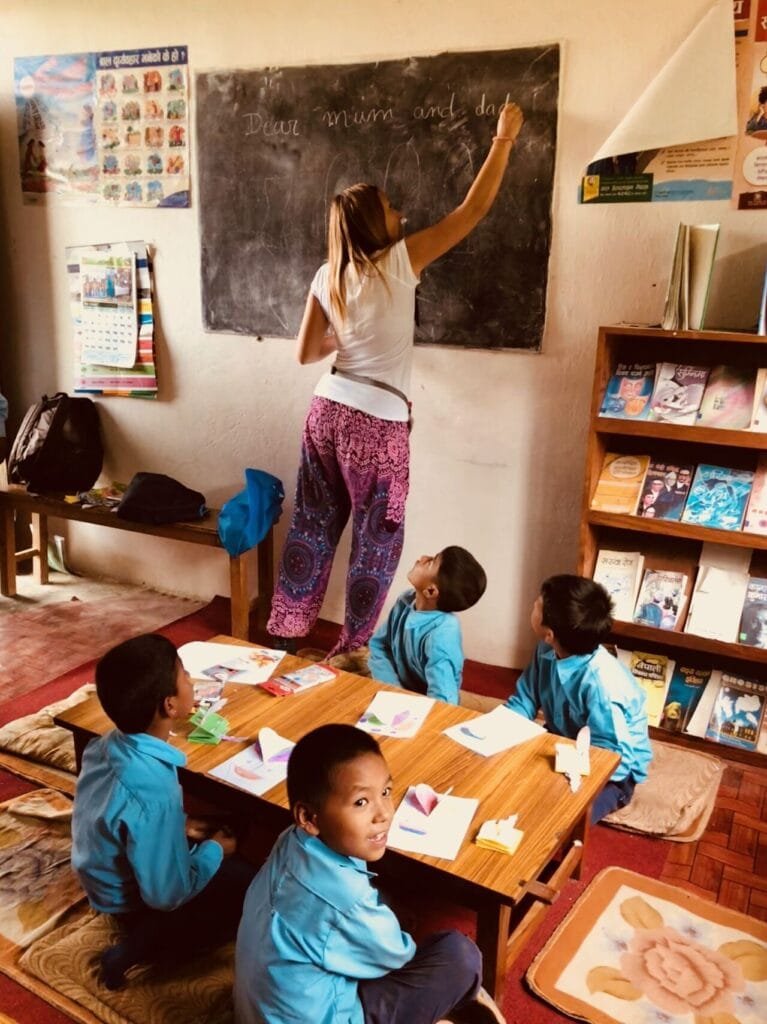Are you passionate about creativity, community engagement, and cultural exchange? Becoming an Arts and Crafts Volunteer in Nepal offers a unique opportunity to merge your love for art with meaningful service. By participating in an Art and Craft Teaching Volunteer program in Nepal, you can help preserve authentic Nepalese traditions while introducing new techniques and perspectives to aspiring artisans. These Creative Arts Volunteer Programs in Nepal are designed for those eager to share skills, foster self-expression, and uplift local communities through the power of art.
Overview
- Project Name: Creative Horizons: Empowering Communities through Art in Nepal
- Tagline: “Spark Imagination, Ignite Change”
Nepal’s cultural tapestry is as vibrant as its Himalayan landscapes. Traditional crafts such as wood carving, Thangka painting, pottery, and weaving define the nation’s artistic identity. However, many local artisans face economic hardships, dwindling resources, and limited market access. Our Arts and Crafts Volunteer in Nepal project promotes these traditions by assisting local artists, schools, and youth clubs. As a volunteer, you’ll collaborate on Community Art Projects Nepal, support at-risk art forms, and encourage cultural pride. This synergy of shared learning and cultural immersion expands creative horizons for volunteers and the communities served.
Project Description
Introduction
“Creative Horizons: Empowering Communities through Art in Nepal” focuses on uplifting local makers and infusing educational programs with artistic enrichment. From primary schools eager for fresh art activities to women’s cooperatives aiming to modernize handicrafts, the scope of Art and Culture Volunteer Nepal placements is broad yet impactful. By engaging with local organizations, we strive to enhance self-expression, preserve traditions, and spark sustainable livelihoods in a nation famed for cultural richness.
Background
Art and craft traditions in Nepal have evolved over centuries, reflecting influences from Hinduism, Buddhism, and indigenous practices. Skilled artisans historically served royal palaces, temples, and monastic institutions, producing elaborate wood carvings, intricate metalwork, and mesmerizing frescoes. With growing tourism and global market exposure, these crafts gained international acclaim. Yet many local practitioners struggle to remain economically viable, especially in rural areas. Women and marginalized groups often lack the training and resources to innovate or scale up their skills. Handicraft Volunteer Projects Nepal addresses these challenges by bridging creative knowledge gaps and fostering a renewed appreciation for local artistry.
Key Objectives
1. Strengthen Traditional Techniques
- Collaborate with senior artisans to document, refine, and sustain heritage crafts.
- Teach novices essential skills for continued cultural preservation.
2. Cultivate New Artistic Pathways
- Introduce contemporary art methods, guiding local artists and youth on modern designs and global trends.
- Provide training in marketing and branding, aiming to broaden the economic possibilities for creative communities.
3. Engage Youth and Women Empowerment
- Develop after-school art workshops and volunteer in Nepal for children, nurturing creativity and boosting confidence.
Through these objectives, the Arts and Crafts Volunteer in Nepal project safeguards cherished cultural expressions and boosts community resilience and economic independence.
Why Volunteer for This Project: Creative Horizons?
The Need
Nepal’s artisanal sector faces rapid modernization, competition from mass-produced imports, and limited market exposure. According to the Government of Nepal’s Central Bureau of Statistics, nearly 20% of the population in rural areas lives below the poverty line, with limited job prospects beyond traditional agriculture. Art forms that once flourished risk disappearing if the next generation doesn’t see their value or viability. By volunteering, you help local artisans adapt and thrive, whether by mentoring youth in painting techniques or elevating weaving cooperatives with innovative design ideas.
Global Relevance
Art is both universal and deeply rooted in cultural identity. Preserving handicrafts tied directly to various UN Sustainable Development Goals (SDGs). Most notably:
- SDG 8: Decent Work and Economic Growth – Helping artisans refine their crafts and market skills fosters inclusive and sustainable economic development.
- SDG 11: Sustainable Cities and Communities – Encouraging heritage preservation and engaging residents fortifies cultural vibrancy.
When you join Creative Arts Volunteer Programs Nepal, you align with these global aims, contributing to a more culturally diverse and resilient world.
Local Voices
“I have embroidered since childhood, but my designs were outdated. Volunteers taught me new patterns and color combinations, and now my products stand out.”
— Maiya, Women’s Cooperative Member in Kathmandu
“Children in our school never had a dedicated art class before. Their excitement and creativity soared when volunteers introduced painting and clay modeling sessions.”
— Pemba, Teacher in Nuwakot District
Roles and Responsibilities
Volunteers’ Roles and Responsibilities in Creative Horizons: Empowering Communities through Art in Nepal
The role of an Arts and Crafts Volunteer in Nepal is dynamic and rewarding. By participating, you become a mentor, collaborator, and cultural ambassador.
Core Tasks
- Artistic Skill-Building
- Organize painting, drawing, or sculpture lessons for local youth and women’s groups.
- Demonstrate core techniques (e.g., color blending, proportion, or shading) while respecting cultural aesthetics.
2. Cultural Exchange & Curriculum Development
- Develop short lesson plans for schools as an Art and Craft Teaching Volunteer in Nepal.
- Integrate local motifs, folklore, and customs into lesson content, encouraging children to celebrate their heritage.
3. Creative Product Innovation
- Guide cooperatives on adding contemporary design twists to established crafts—like modern patterns for woven fabrics.
- Encourage experimentation with eco-friendly materials or upcycled resources.
4. Market Linkage Support
- Provide tips on product branding, packaging, and social media marketing.
- Suggest ways to target tourists or global audiences, boosting artisans’ incomes.
5. Community Art Installations
- Lead public murals or Community Art projects in Nepal that depict local stories, environment conservation themes, or women’s empowerment.
- Involve local youths in planning and execution, fostering ownership.
6. Art Workshops and Showcases
- Conduct demonstrations, open studios, or pop-up art exhibitions.
- Display local pieces created during volunteer-led sessions to generate community pride and potential sales.
7. Artisan Support and Collaboration
- Partner with experienced craftspeople to update outdated designs or refine production methods.
- Offer constructive feedback on durability, color schemes, or finishing touches.
8. Documentation and Resource Building
- Take photos or videos of craft processes as references for future training.
- Create step-by-step manuals, leaving a lasting educational resource for local groups.
9. Youth Clubs and Cultural Events
- Collaborate with local youth clubs to plan cultural nights, drama performances, or folk dance presentations.
- Act as a mentor for Folk Art Volunteer Programs Nepal, guiding young performers on stage setup, costume design, or promotions.
10. Monitoring & Evaluation
- Gather feedback from artisans, teachers, and students regarding project impact.
- Share suggestions for improvements, ensuring continued growth even after you depart.
Daily Activities
A typical day may look like this:
- 08:30 – 09:15: Breakfast, sampling Nepali staples like dal bhat or chapati.
- 09:15 – 10:00: Travel (walk, bus, or tuk-tuk) to the workshop or school site.
- 10:00 – 13:00: Conduct art lessons, provide demonstrations, or assist local artisans.
- 13:00 – 14:00: Lunch break, often shared with community members.
- 14:00 – 16:00: Continue teaching, refine craft items, or offer marketing guidance to cooperatives.
- 16:00 – 17:00: Return to accommodation and debrief with project coordinators, planning the next day’s sessions.
- 17:00 – Onwards: Cultural immersion activities, free time, or journaling.
Special Projects
Some volunteers undertake special or long-term initiatives. For instance:
- Murals for Social Change: Collaborate with youths to design large-scale artworks addressing pressing community issues like plastic pollution.
- Art Exhibits in Urban Hubs: Link rural craftspeople to city-based galleries or markets.
- Youth Media Clubs: Teach photography or digital art, encouraging local teens to document daily life creatively.
Skills and Requirements
Required Skills
- Passion for Arts: Genuine interest in teaching drawing, painting, sculpting, or mixed-media crafts.
- Team Spirit: Ability to collaborate effectively with teachers, local artisans, and fellow volunteers.
- Adaptability: Openness to culturally diverse work environments and the ability to handle resource limitations creatively.
Eligibility
- Age Restriction: 18 years or older (youth under 18 may join if accompanied by a guardian).
- Time Commitment: A minimum stay of two weeks is recommended for meaningful engagement.
- Language Skills: English fluency is helpful; learning some Nepali can boost your impact.
Preferred Skills
- Teaching Experience: If you’ve taught art or crafts before, you’ll adapt quickly to an Art and Craft Teaching Volunteer Nepal setting.
- Cultural Sensitivity: Awareness of local traditions fosters stronger rapport with students and artisans.
- Marketing or Entrepreneurship Knowledge: Ideal for guiding artisans who wish to commercialize their skills.
Cultural Experience
Cultural Immersion
Stepping into Nepal feels like entering a tapestry of vibrant festivals, ancient temples, and elaborate rituals. During Nepal Traditional Arts Volunteer programs, you can witness how art is woven into daily life—whether in intricately carved wooden doors or color-drenched festival processions. Volunteers often stay with Nepali host families or in volunteer houses, enjoying home-cooked meals and learning local customs. Engaging in neighborhood events, singing Nepali folk tunes, or participating in seasonal celebrations fosters lasting relationships and mutual learning.
Language Learning
Basic Nepali phrases like “Namaste” (Hello) or “Dhanyabad” (Thank you) pave the way for deeper connections. Many participants were immersed in short language sessions to better communicate with artisans. While English is used in tourism centers, a few Nepali words show respect and genuine interest in local ways of life.
Logistics and Support
Accommodation
Volunteers typically choose between:
- Volunteer House: Dorm-style or shared rooms with other participants.
- Homestay: Living with a Nepali family for total cultural immersion.
Basic amenities include comfortable sleeping areas, a communal kitchen or dining space, and access to bathrooms. Expect simple yet functional facilities that reflect local norms.
Meals
- Three Daily Meals: Traditional Nepali cuisine revolves around dal bhat (lentils and rice), vegetables, and occasional meat dishes.
- Dietary Flexibility: Vegetarian or dietary-specific requests can be accommodated if communicated in advance.
Transportation
- Airport Pickup: A local coordinator greets you at Tribhuvan International Airport in Kathmandu.
- Daily Commutes: Depending on your placement, you may travel by foot, rickshaw, or local bus. For rural areas, short hikes might be part of your everyday routine.
On-Site Support
Coordinators and staff members are available to assist with:
- Orientation on local customs, project objectives, and schedules.
- Addressing any cultural or logistical barriers.
- Coordinating safety protocols and emergency arrangements.
Health and Safety
- Vaccinations: Recommended immunizations typically include Hepatitis A, Typhoid, and Tetanus. Consult your healthcare provider for specifics.
- Travel Insurance: Mandatory to cover potential medical emergencies or personal property issues.
- Emergency Protocols: The project staff maintains guidelines for urgent care and can direct you to nearby clinics or hospitals.
Program Fees and Inclusions
For complete fee details, visit our Program Fees page. In general, costs cover:
- Accommodation and meals throughout your stay.
- Airport transfers and in-country orientation.
- Materials for workshops, if available through the project’s budget (though certain art supplies might require volunteer contributions).
- Ongoing support from local coordinators and staff.
Your financial contribution sustains the day-to-day operations of Nepalese Craftsmanship Volunteer projects, ensuring communities have the resources they need to thrive.
Impact and Outcomes
Volunteer Impact
Becoming part of Creative Arts Volunteer Programs Nepal shapes your personal and professional journey in multiple ways:
- Skill Development: Hone your teaching, collaboration, and cross-cultural communication abilities.
- Creative Inspiration: Learn traditional craft techniques from local experts, expanding your artistic repertoire.
- Cross-Cultural Awareness: Gamore profoundly empathizes with global perspectives, fostering cultural intelligence that resonates in future endeavors.
Community Impact
- Enhanced Artistic Opportunities: Youth and adult learners gain new channels for self-expression and skill enhancement.
- Economic Growth: Artisans who adapt and refine their crafts can access broader markets, raising household incomes.
- Cultural Preservation: Visual Arts Volunteer Nepal participants help preserve folk traditions, passing them down to younger generations.
Success Stories and Testimonials
Volunteer Experiences
Caroline, France
“Being an Arts and Crafts Volunteer in Nepal was truly transformative. I shared watercolor techniques with local students who’d never had formal art lessons. Their creativity was astounding! We even hosted a small exhibition showcasing their paintings, and the pride in their eyes was unforgettable.”
Adam, Australia
“Collaborating with master woodcarvers taught me humility and patience. I also introduced digital design basics to a youth club, bridging tradition with modern innovation. Our synergy created products that quickly sold at local markets.”
Local Impact Stories
- Women’s Embroidery Cooperative in Bhaktapur: Volunteers introduced innovative patterns and taught social media marketing basics. Sales soared, enabling the group to fund a community library and sponsor local children’s schooling.
- School Mural Revival in Chitwan: Art volunteers and teachers revitalized a once-dilapidated classroom wall with a vibrant mural celebrating Nepali wildlife. Students reported newfound excitement for their environment and art classes.
Application Process
Ready to inspire and empower? Follow these steps to join Creative Horizons: Empowering Communities through Art in Nepal.
- Complete the Online Application: Go to https://www.buddhistmonasteries.org/apply-now/ and fill out the form.
- Submit Your Resume: Attach your CV and two professional or academic references.
- Await Confirmation: Check your email inbox for a confirmation note detailing the next steps.
- Pay the Booking Fee: Secure your place with a €150 program booking fee.
- Receive the Pre-Departure Pack: Get comprehensive guidelines, including language basics, cultural etiquette, and project expectations.
- Final Payment: Pay the remaining program fee upon arrival or via wire transfer.
FAQs
Is prior art teaching experience necessary to be an Arts and Crafts Volunteer in Nepal?
While helpful, it’s not mandatory. Programs are flexible, and local staff guide you on lesson planning. Enthusiasm and willingness to learn are most crucial.
During my volunteer stay, Can I focus specifically on traditional Nepali content?
Absolutely. Many placements involve Nepal Traditional Arts Volunteer work, pairing you with skilled artisans to preserve and enrich indigenous crafts.
Are these Creative Arts Volunteer Programs Nepal available year-round?
Yes, generally. However, some placements might be more active during local festivals or school sessions. Check program dates when applying.
What if I want to run an Art Workshops Volunteer Nepal initiative for a few days only?
Short-term volunteering is possible, though a minimum of two weeks is recommended for deep engagement. If you have specialized workshops in mind, coordinate with staff for scheduling.
Does the cost cover art supplies, or should I bring my own?
Basic materials might be available, but certain specialized mediums or high-quality supplies can be scarce in remote areas. Bring supplies you deem essential to ensure you can conduct your sessions effectively.
How do I handle potential language barriers with local students or artisans?
Local coordinators and translators usually help. Art is a universal language, and demonstrations or visuals often convey concepts without extensive verbal explanation.
Will I get opportunities for Cultural Exchange Volunteer Nepal activities besides art?
Absolutely. Social visits, language lessons, festival celebrations, and local travel are all part of the holistic volunteer experience.
Join Us Today to Make a Difference!
Infuse Nepal’s communities with vibrant creativity, cross-cultural collaboration, and renewed artistic pride. As an Arts and Crafts Volunteer in Nepal, your journey can transform lives, amplify heritage crafts, and spark fresh inspiration for future generations.
- Apply Now: https://www.buddhistmonasteries.org/apply-now/
- Contact Us: support@vin.org.np
- WhatsApp: +977 9851070477
Step into Art and Craft Teaching Volunteer Nepal projects with an open heart and witness how your dedication to the arts can empower local artisans, children, and aspiring makers nationwide.
Gallery



